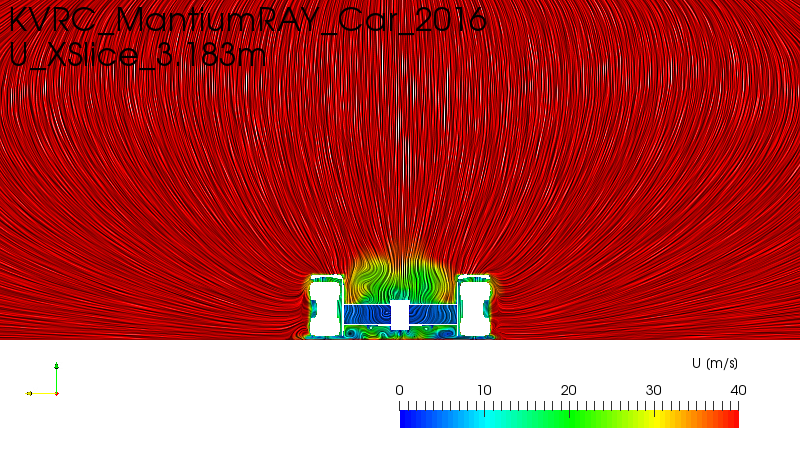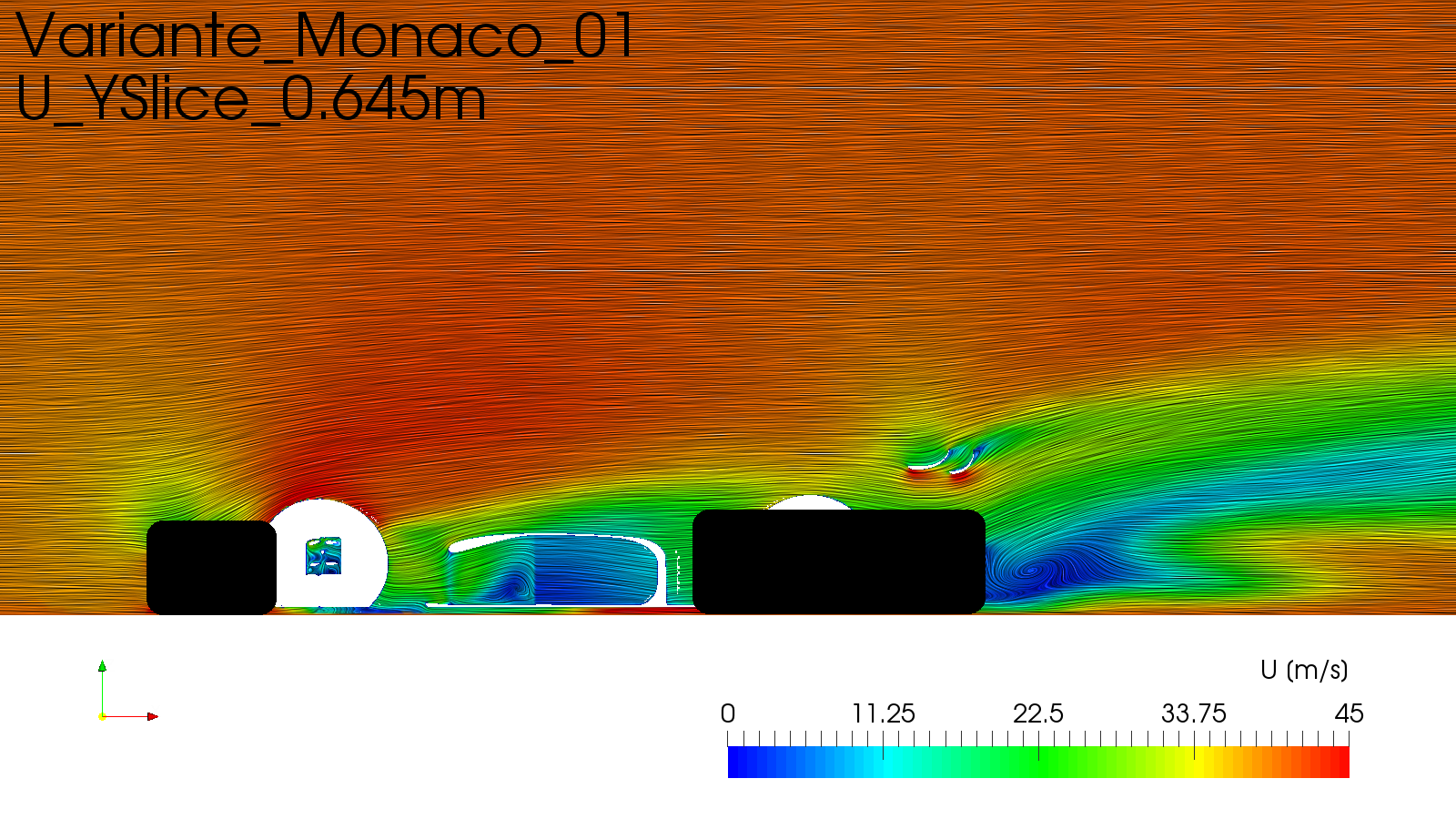Hi guys, this is a general aerodynamics analysis of my virtual race car, competing in the Mantium Challenge, born on the ashes of the KVRC. The car itself is very similar to the KVRC one (that you can see in the previous posts) and features only small adaptations for the slightly revised technical regulations of the new championship.
To the core of the post…
On the surface of the car are represented the velocity field and vector field of the airflow. The circles point out the most critical areas of the car, where the airflow doesn’t behave as predicted or at its best:

Black Circle
Problem: very large area of stagnation and turbulence. It slightly increases drag values over that part of the bodywork and decreases airflow quality to the following aero elements, which aren’t many, nor important, luckily. So, despite its entity, the performance loss is not significant.
Cause: the pressure gradients impose a very steep airflow angle at the leading edge of the sidepod, the which can’t handle it at laminar state for much. Airflow separation happens and propagates over the rest of the bodywork, which is not designed to recover from such situation. Also, the exhaust pipes don’t point perfectly tangentially to the bodywork surface, so they enhance the problem.
Solution: F1 style vortex generators should solve the problem, but mesh quality around that area may not be high enough to reproduce accurately the vortices. Another solution, adopted during the last race (and abandoned for no reason…), is the use of a “slat” on the leading edge of the sidepod.
Blue Circle
Problem: turbulent area just in front of a downforce producing device.
Cause: non ideal airflow direction.
Solution: rounding the edges just behind the wheel should do the job.
Orange Circles
Problem: non ideal flow direction and velocity over the wheel arches.
Cause: unexpected airflow direction in proximity of the wheel, possibly caused by wheel rotation.
Solution: airflow can hardly be deflected towards the ideal direction, so a slightly different arch geometry is needed, with greater and more gentle radiuses on the upper edges.
Purple Circle
Problem: high speed and low pressure air causing lift over a surface that should, instead, produce downforce.
Cause: up washed air from the front wing meets a sharp edge that happens to be shaped as a vortex generator (f-18 style). The thus created vortex decreases air pressure.
Solution: rounding the edges might decrease the problem entity, getting rid of the vortex; however, the new and rounded surface could act as a wing, still generating lift. Instead, re-shaping the whole section with a gentler geometry could solve the problem, but it would decrease front wing performance. Therefore, a trade-off should be studied.
Red Circle
 Problem
Problem: early flow separation and dirty flow from one wing to the other.
Cause: high angle of attack of both airfoils without re-energizing boundary layer slots.
Solution: a better disposition and coupling of the two elements would help. However, it must be said that such flow separation was predicted, and that such airfoil disposition is not necessarily bad. In fact, it gives much more downforce in comparison with a traditional wing (the downside is that it produces much more drag as well, but it doesn’t really matter on the Monaco track, where it raced), especially with the kind of wing that the regulations allow you to produce: maximum two airfoils enclosed in a tight box.
Now, let’s move on to a fast comparison with one of last season’s strongest car, Mantium’s car...


This cuts are taken at the height of the rear wheels.
The most interesting and important area is in between the tires and near the ground, the diffuser area. That is something I already talked about in my previous post, underlining its huge importance as well as the importance of vortices for the control of flow detachments.


In this other comparison it is interesting to notice that even when clean air is fed to the radiator, recirculation just in front of it is still possible, unfortunately. That is caused by the really high “flow resistance” of the radiator itself. A proper sidepod duct design is important to solve this crucial issue. As this is a huge topic, it may need a dedicated post...
Comments or questions? Did I miss something?








